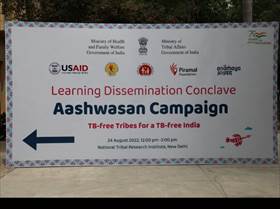75 tribal districts identified for TB interventions
Recently 75 high burden tribal districts have been selected by the Ministry of Tribal Affairs and the Central TB Division of the Ministry of Health and Family Welfare to become TB free in the coming months.
For 75 such districts, a three-pronged strategy is presented, focusing on the following:
- Generate demand for TB services through community mobilization, increasing awareness of TB symptoms, prevalence and treatment procedures, and continuing engagement with community influencers involved in the process of reducing stigma and fear associated with TB.
- To improve the delivery of TB services by provision of customized solutions by leveraging PIPs and other sources of funding to bridge the implementation gap by increasing the infrastructure of TB testing or testing and diagnosis.
- Reducing the risk and spread of disease through proactive case-detection campaigns.
Tribal TB Initiative
- The ‘Tribal TB Initiative’ is a joint initiative of the Ministry of Tribal Affairs and the Central TB Division of the Ministry of Health, supported by USAID as the technical partner and by Piramal Health as the implementation partner.
- Under this initiative, Aashwasan Campaign was launched from Nandurbar district of Maharashtra to detect active cases of TB in 174 tribal districts of India.
Aashwasan Campaign
- The campaign has brought together around 2 lakh community influencers, who participated with full dedication to make this campaign a success. These include tribal leaders, tribal doctors, PRI members, self-help groups (SHGs) and youth from tribal areas.
- Under this, door-to-door TB screening was done in 68,019 villages. Based on oral examination of 1,03,07,200 persons, 3,82,811 persons were identified as having TB.
- Of these, 2,79,329 (73 per cent) samples were tested for TB and 9,971 people tested positive for TB were treated as per the protocol of the Government of India.
End TB strategy
India is committed to eliminate tuberculosis from the country by 2025, five years ahead of the World Health Organization’s (WHO) global target i.e. 2030.
Month: Current Affairs - August, 2022
Category: Government Schemes Current Affairs


